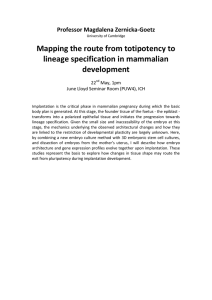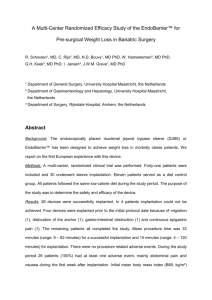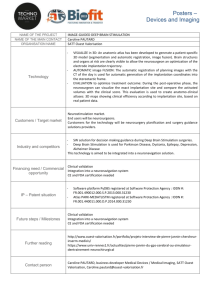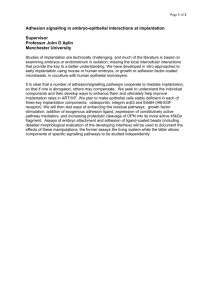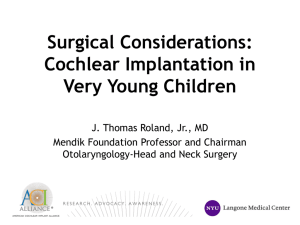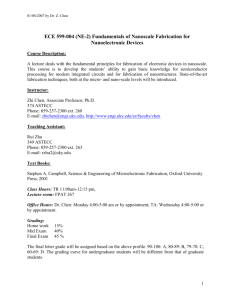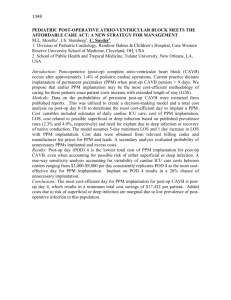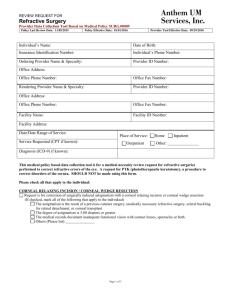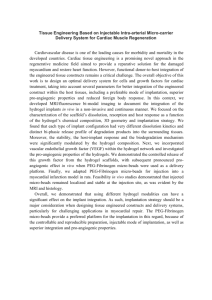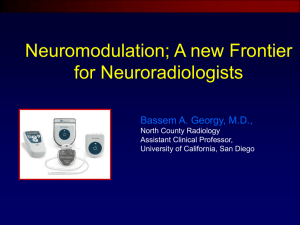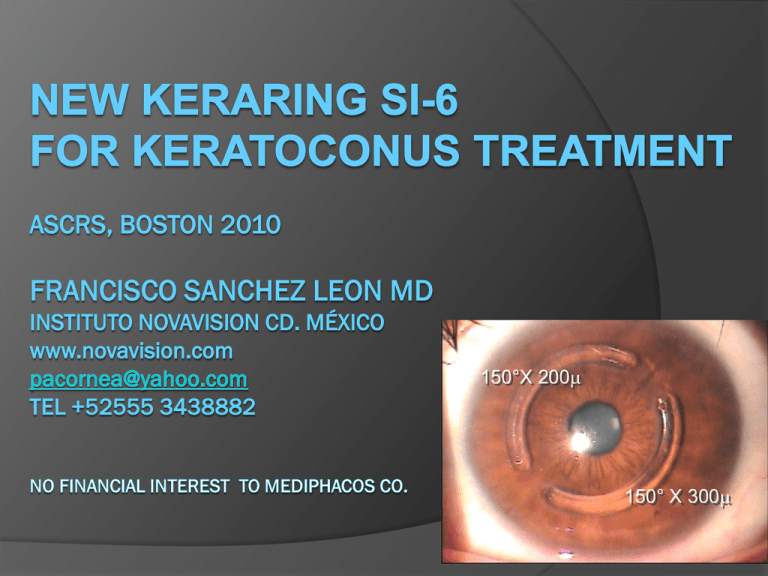
150°X 200m
150° X 300m
Pourpose
Evaluate the corneal remodeling using
the new Keraring SI 6 for the
Keratocous Treatment.
Corneoplastic Techniques
Mechanical methods
Intracorneal segments
Incisional procedures
Biochemical methods
Cross-linking UV light
Conductive Keratoplasty (CK)
Mix methods
Excimer laser ablation
Inlays (Acufocus)
©1997 – 2006 IntraLase Corp. All rights reserved. Confidential Mkt Doc 470 Rev. A
Optimized prismatic design
Scalene triangular shape SI-6 compared to
Isosceles triangle in SI-5.
Improves effect and optimizes total internal
reflection, reducing glare and halos
800µ base width instead of 600µ
Wider base provides 25% greater implant
volume and compensates for reduction of
effect in the larger optical zone
When should Keraring SI-6
implantation be considered?
Mesopic pupil diameter ≥ 5mm
BCVA is ≥ 0.6
Moderete Sphere ≤ 5 D
Cylinder value is ≤ 5 D
Segment thickness should not exceed 60% of the
minimum pachymetry at the 5.5 optical ring zone
When PRK is planned as a second procedure.
When phakic IOL implantation is planned as a
second procedure
Different Arc Lengths for each
Refraction and Topography appearance
New Keraring SI-6
IS-6 IntraLase 60 Hz parameters
Depth in Cornea 80% at 5.5 mm
Incision Axis at steepest meridian
Entry Cut Length 1 mm
Inner Diameter 6.0 mm
Outer Diameter 6.8 mm
Ring Energy 1.5
Entry Cut Energy 1.3
New Keraring SI-6
150°Asymmetric Thickness Implantation
-3.50/-4.00X135°=20/60
150°X 200m
-0.50/-1.25 X 30°=20/30
150° X 300m
New Keraring SI-6
120°symmetric implantation
+1.50 / -7.50 X 20°= 20/60
Plano/-1.25 X 45°= 20/30
120°X 250m
Single Inferior Segment for PMD
Corneoplasty Achivement
Preop
Postop
New SI-6 Keraring
Early Conclusions
Keraring SI-6 achieves Corneoplasty purposes.
Keraring SI-6 is not intended to replace the IS-5,
but rather intends to offer the surgeon additional
tools to customize the corneal remodeling
according to each individual patient’s needs

